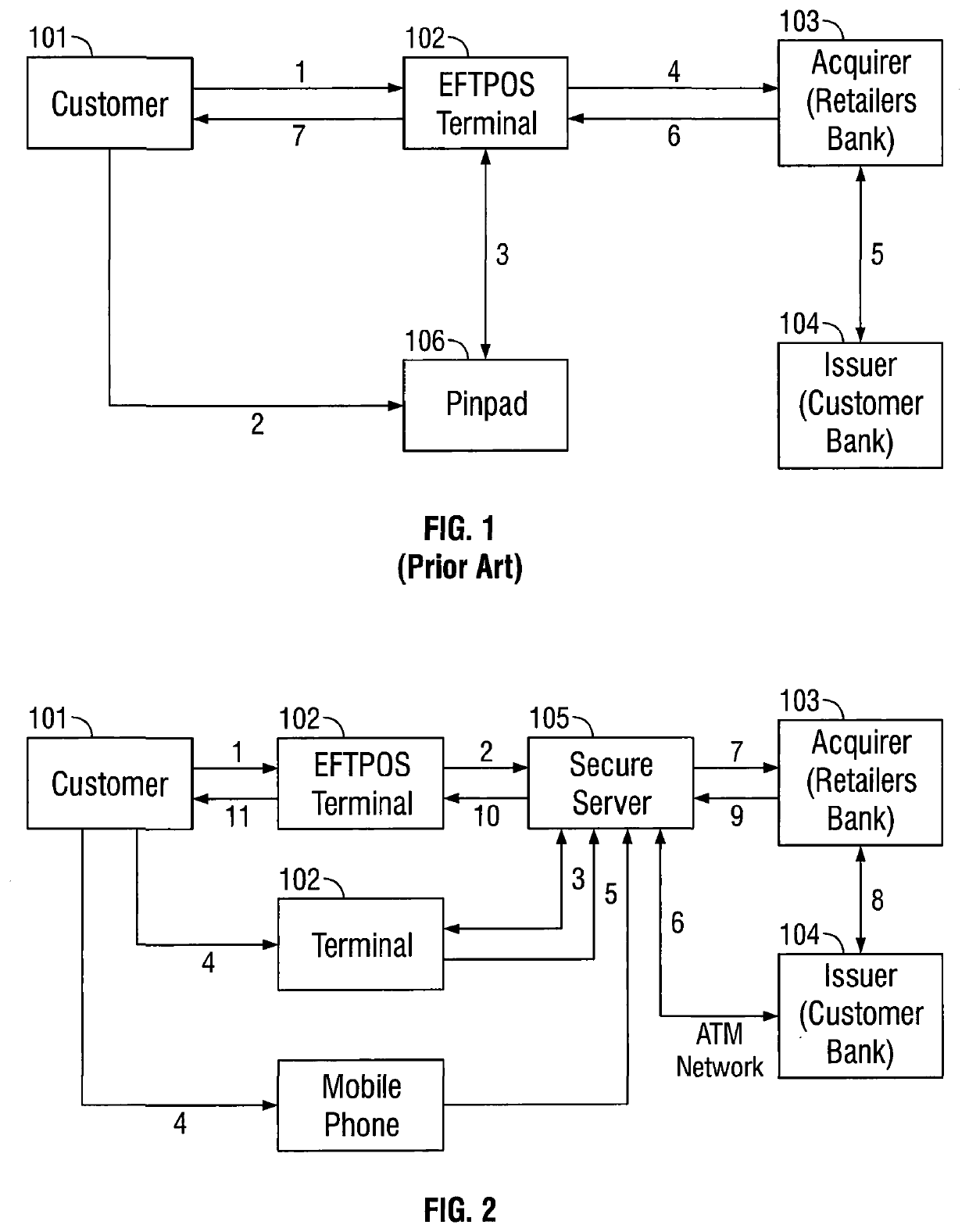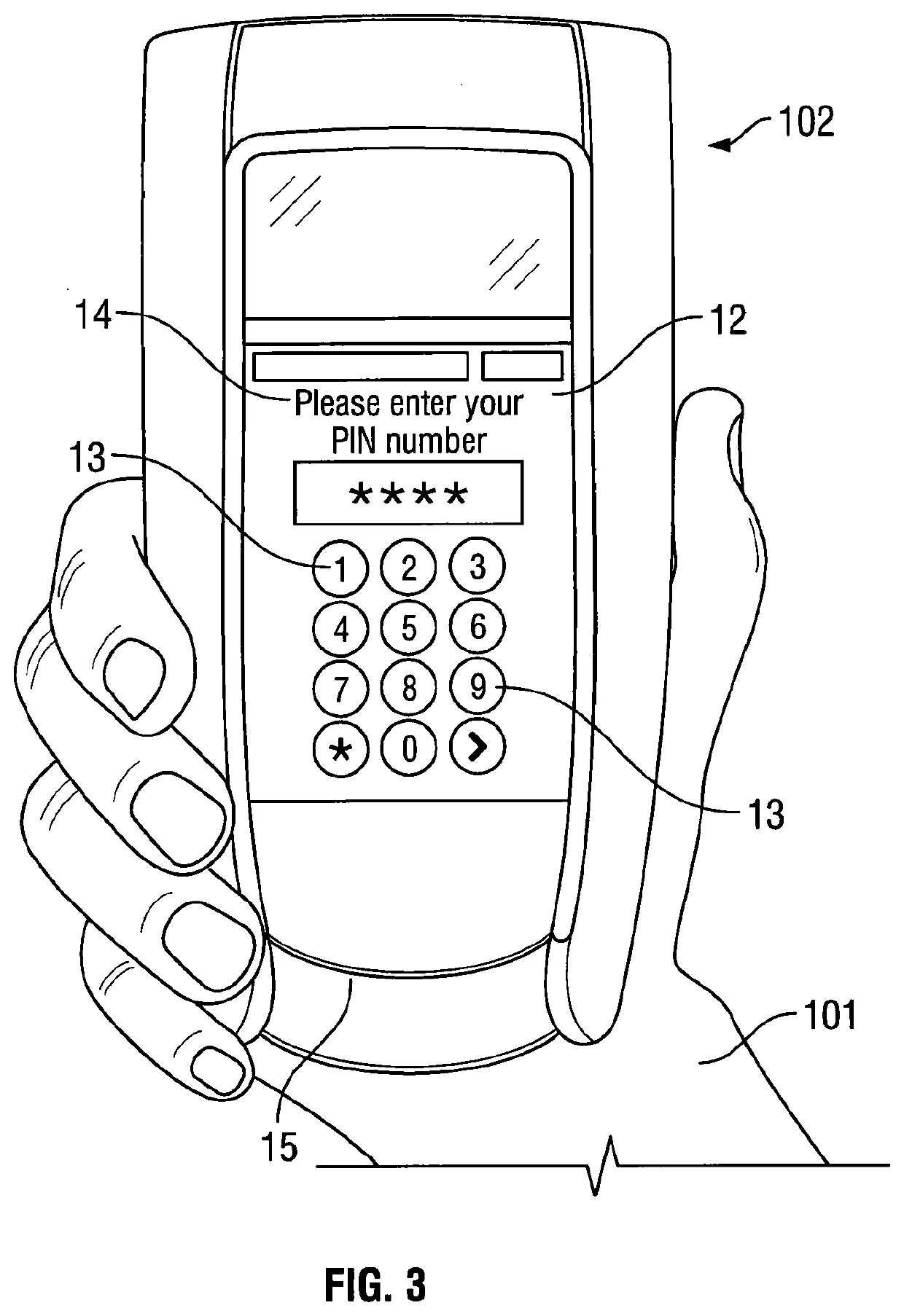Authentication Device & Related Methods
a technology of authentication device and verification method, which is applied in the direction of protocol authorisation, data processing applications, instruments, etc., can solve the problems of failure of operation, impose cost implication on terminal manufacturers, and existing system problems, etc., and achieve the effect of low cos
- Summary
- Abstract
- Description
- Claims
- Application Information
AI Technical Summary
Benefits of technology
Problems solved by technology
Method used
Image
Examples
Embodiment Construction
[0120]FIG. 3 shows an illustrative embodiment of the present invention. The invention provides a PIN capture device 102. It is configured such that it can be held in one or both hands by the user 101 as shown. The terminal 102 looks like a conventional PCI compliant terminal in all respects except that internally it does not have the ability to securely store a bank session key. The terminal has a touch screen 12 which is able to display a virtual keypad comprising a plurality of keys 13. The screen is also able to display messages and prompts 14 as well as read input from the user 101 when the user presses a key 13. The terminal has a card reading arrangement 15. In FIG. 3, this is shown as a slot or recess into which a payment card with a chip may be inserted. A contactless card reader may be used in addition to or as an alternative to the slot, as may a magnetic strip reader.
[0121]In an embodiment of the invention, when a customer wishes to make a transaction at a retailer's prem...
PUM
 Login to View More
Login to View More Abstract
Description
Claims
Application Information
 Login to View More
Login to View More - R&D
- Intellectual Property
- Life Sciences
- Materials
- Tech Scout
- Unparalleled Data Quality
- Higher Quality Content
- 60% Fewer Hallucinations
Browse by: Latest US Patents, China's latest patents, Technical Efficacy Thesaurus, Application Domain, Technology Topic, Popular Technical Reports.
© 2025 PatSnap. All rights reserved.Legal|Privacy policy|Modern Slavery Act Transparency Statement|Sitemap|About US| Contact US: help@patsnap.com


